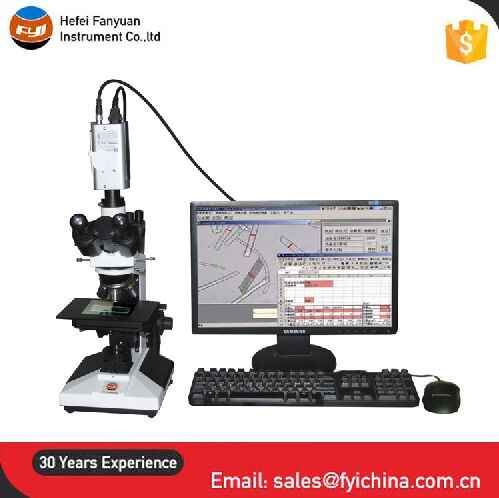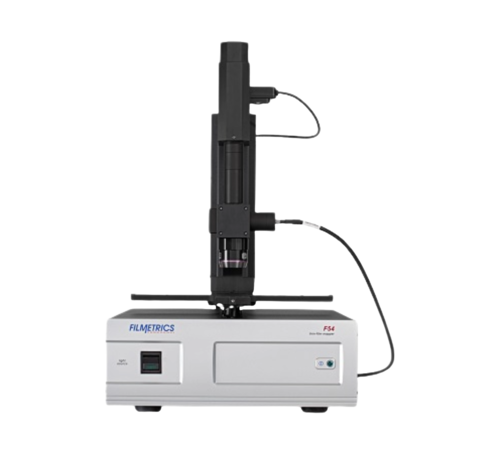Maximize Your Fiber Optic Efficiency: Understanding Optical Fibre Diameter Analyser Modern Technology
The performance of fiber optic systems is seriously affected by the precision of their diameter, a variable frequently forgot in the search of ideal signal integrity. Understanding the innovation behind optical fiber size analysers reveals the elaborate balance between dimension precision and production quality. These gadgets not just boost compliance with industry standards yet additionally provide real-time insights that can preemptively deal with prospective problems. Nevertheless, the ramifications of their usage expand past simple dimension; they can essentially change the landscape of fiber optic efficiency. What factors should one take into consideration to harness their full potential?
Value of Optical Fibre Diameter
The diameter of optical fibre plays an essential role in determining the efficiency and efficiency of interaction systems. It affects numerous vital specifications, consisting of the mode of light breeding, attenuation, and data transfer ability. Bigger sizes normally permit numerous light modes, facilitating greater information transmission prices. Alternatively, smaller sizes often tend to sustain fewer modes, which can enhance signal clarity and reduce crosstalk.

Furthermore, comprehending the diameter's implications can lead to cost savings by minimizing the need for signal boosting and repeaters in comprehensive networks (optical fibre diameter analyser). Finally, the importance of optical fibre size can not be overemphasized, as it straight affects the general effectiveness and integrity of contemporary interaction systems

Exactly How Size Impacts Signal Quality
Signal high quality in optical fibre systems pivots dramatically on the diameter of the fiber. The size influences numerous essential criteria, consisting of depletion, data transfer, and modal diffusion. A smaller sized size can lead to higher attenuation rates, causing signal loss as light journeys via the fibre. This depletion can compromise the stability of the transmitted data, bring about a decline in signal quality, specifically over long distances.
Conversely, bigger diameters normally enable enhanced light capture and reduced modal dispersion, enhancing signal clearness. In multimode fibres, a bigger core diameter can sustain multiple light modes, but it may additionally introduce intermodal diffusion, which can break down signal high quality. Selecting the ideal fiber size is essential for achieving the desired performance in details applications.
Moreover, the communication in between the fibre size and the wavelength of the light utilized plays a critical role in identifying the reliable transmission distance and general signal integrity. Recognizing just how fibre size affects signal top quality is important for network designers and engineers aiming to maximize optical fiber systems for trusted, high-speed information transmission.
Review of Diameter Analyser Innovation
In many optical fibre manufacturing procedures, accurate measurement of fibre diameter is vital for making sure constant efficiency and quality (optical fibre diameter analyser). Size analysers are innovative tools made to analyze the physical dimensions of optical fibers with high precision. They utilize innovative optical and laser innovations to gauge the size, ovality, and concentricity of the fibre, hence offering crucial data for high quality control
These analysers can run in-line during the production procedure or as component of off-line testing protocols. In-line systems allow real-time monitoring, allowing makers to change specifications instantly, consequently keeping optimal production problems. go to my blog Off-line analysers, on the various other hand, give extensive analyses of sets, guaranteeing that any kind of inconsistencies from specified tolerances are recognized and resolved.
Size analysers substantially add to the decrease of defects in optical fibers, enhancing total item integrity. By constantly determining key specifications, these technologies facilitate conformity with market criteria and specifications. As the demand for high-performance optical fibres remains to rise, the role of size analysers ends up being significantly important in attaining the desired top quality and performance standards in fiber optic systems.
Trick Features of Fibre Size Analysers
Although different designs of fibre diameter analysers exist, they commonly share several crucial features that enhance their capability and integrity. Among one of the most considerable functions is high-resolution dimension capabilities, which ensure specific diameter readings, important for keeping quality assurance in fiber production. In addition, many analysers integrate innovative optical sensing units made to detect minute variations in fiber diameter, hence giving invaluable data for process optimization.
Another crucial feature is real-time surveillance, allowing drivers to obtain prompt responses on fibre size throughout the production procedure (optical fibre diameter analyser). This capability facilitates quick modifications and minimizes the possibility of issues. Several analysers likewise come furnished with easy to use user interfaces, allowing operators to quickly navigate through data and setups outcomes
In addition, robust data storage and analysis performances are necessary for tracking historical performance trends and ensuring conformity with industry standards. Some versions even offer connection options for assimilation right into existing production control systems, improving overall operational efficiency. Finally, compact and mobile layouts enable adaptable deployment within production environments, ensuring that top quality assurance processes are seamless and reliable. These functions collectively add to the efficacy of fibre diameter analysers in maximizing fiber optic performance.
Finest Practices for Fiber Optimization

First, normal calibration of optical fiber size analysers is necessary. This ensures exact dimensions and reduces possible discrepancies that could impact efficiency. Next off, preserving a clean workplace is important; dust and pollutants can lead to signal degradation.
Furthermore, it is essential to pick fibers that fulfill particular application needs. This involves reviewing variables such as depletion, bandwidth, and environmental conditions. Appropriate setup strategies should likewise be stuck to, consisting of preventing sharp bends and extreme stress, which can endanger fiber integrity.
Additionally, employing advanced tracking systems can promote real-time efficiency assessments, allowing timely identification of problems. Normal screening and upkeep must be performed to make certain that fibers remain within ideal functional criteria.
Finally, training personnel on the most up to date fibre optimization technologies and methods will certainly improve their ability to execute effective strategies. By adhering to these finest methods, organizations can dramatically boost the performance and life expectancy of their optical fiber systems, making sure efficient communication and data transfer.
Final Thought
In conclusion, the combination of optical fiber size analyser modern technology is important for making the most of fibre optic performance. By guaranteeing precise measurements of fiber dimensions, these analysers substantially enhance signal top quality and minimize losses during information transmission. Routine calibration and upkeep of the analysers are crucial to maintain ideal efficiency and compliance with sector criteria. Inevitably, the application of this modern technology promotes enhanced information transmission rates and reinforces signal stability, contributing to the overall efficiency of fiber optic systems.
Signal top quality in optical fibre systems hinges substantially on the size of the fiber.In find out here many optical fibre manufacturing processes, exact dimension of fiber size is essential for guaranteeing consistent performance and quality. As the demand for high-performance optical fibers proceeds to rise, the function of diameter analysers becomes increasingly crucial in accomplishing the desired top quality and efficiency standards in fiber optic systems.
These attributes collectively contribute to the efficiency of fiber size analysers in optimizing fiber optic efficiency.
In conclusion, the assimilation of optical fiber diameter analyser technology is vital for taking full advantage of fiber optic performance.